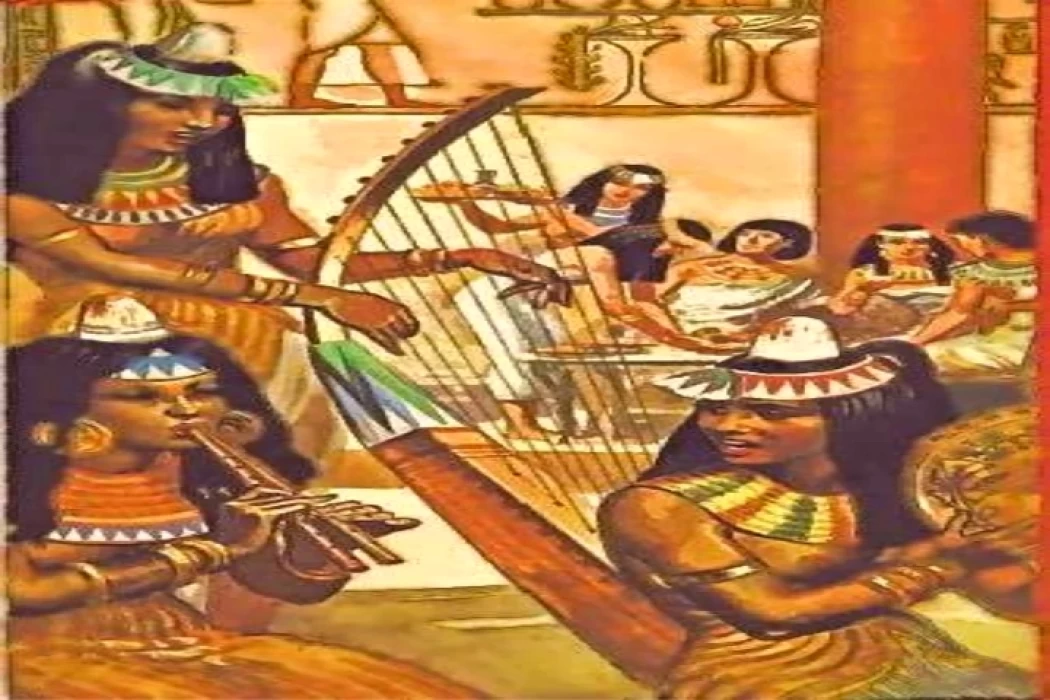
Ancient Egyptian Music | History
Music in the Ancient Egyptian Era
The ancient Egyptians were interested in music, and it was of great importance in civil and religious life, in festivals and celebrations, and even temple courtyards and sacrifices, so music was an art with its origins, rules and supervisors. The goddess Hathor was closely associated with music, and was nicknamed the Lady of Music in Ancient Egypt, according to Sabah Abdel Razek, Director General of the Egyptian Museum in Tahrir.
A colourful scene in one of the tombs of Bani Hassan, in Minya Governorate (south of Cairo), shows a group of women, men, a child and animals, known as Asiatics, standing before King Amenhotep and the head of the region making offerings and carrying a musical instrument similar to the oud.
As the world celebrates Music Day, the Egyptian Museum in Tahrir is currently displaying 22 artifacts that reflect the importance of music in ancient Egypt, including a wooden model depicting a band during a musical performance from the Middle Kingdom, discovered in the Saqqara archaeological area, and a small vaulted funerary plaque depicting a fugitive musician named “Har Sawa” playing in front of the idol (Ra Hor Akhti) from the 25th Dynasty, discovered in the Sheikh Abdel Qurna area in Luxor, in addition to a set of single and double flutes made of wicker, and two pieces of colored leather that were used as drum covers discovered in Akhmim from the late period.
Inscriptions in the archaeological temple of Dendera show the goddess Hathor holding and playing the tambourine. Other inscriptions show Hathor holding the ‘Shakhshikha’ instrument and the tambourine in these scenes, which is the same tambourine that we see today in Nubia, and Hathor even holds it in almost the same way, according to Al-Shammaa, who explains that the idol ‘Bess’ was also associated with music, and an inscription in the Philae temple shows ‘Bess’ holding the tambourine, according to Al-Shammaa.
The idea of an orchestra existed in Pharaonic Egypt since the Old Kingdom, as confirmed by drawings and inscriptions displayed in the Egyptian Museum, and the ancient Egyptians also excelled in the use of the flute. ‘There is a scene carved on an archaeological tree, which is currently on display in the National Museum of Civilisation, showing the ancient Egyptians playing the flute or double flute,’ says Al Shammaa, adding that the scene is currently on display in the National Museum of Civilisation.
Egyptian museums have a collection of musical instruments and ancient inscriptions that archaeologists say demonstrate the Egyptians' fondness and interest in music since the early dynasties. Among the instruments on display at the Egyptian Museum in Tahrir are drums and tambourines, and a collection of clappers, shakhals, sajjals and bells, made of bronze, wood, ivory and gilded wood, dating back to the New Kingdom and Late Period, and discovered in several areas, such as Saqqara, Abydos, Luxor and San al-Hajar.
The ancient Egyptian interest was not limited to instruments and musicians, but singers also had a great place, as Al-Shamaa explains that ‘the priestly pyramid in ancient Egypt included a very important job, which was the job of the chanter of the god, who was revered and honoured, and was even mummified upon death with royal mummification,’ pointing out that ‘singing and chanting was one of the rituals of the Pharaonic temples.’















